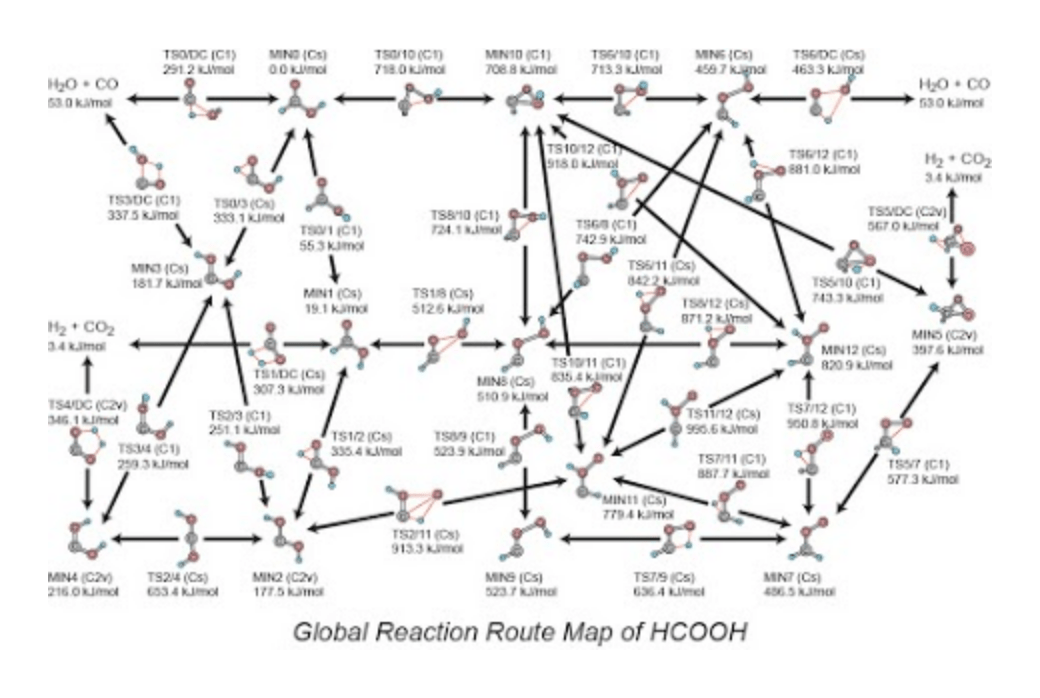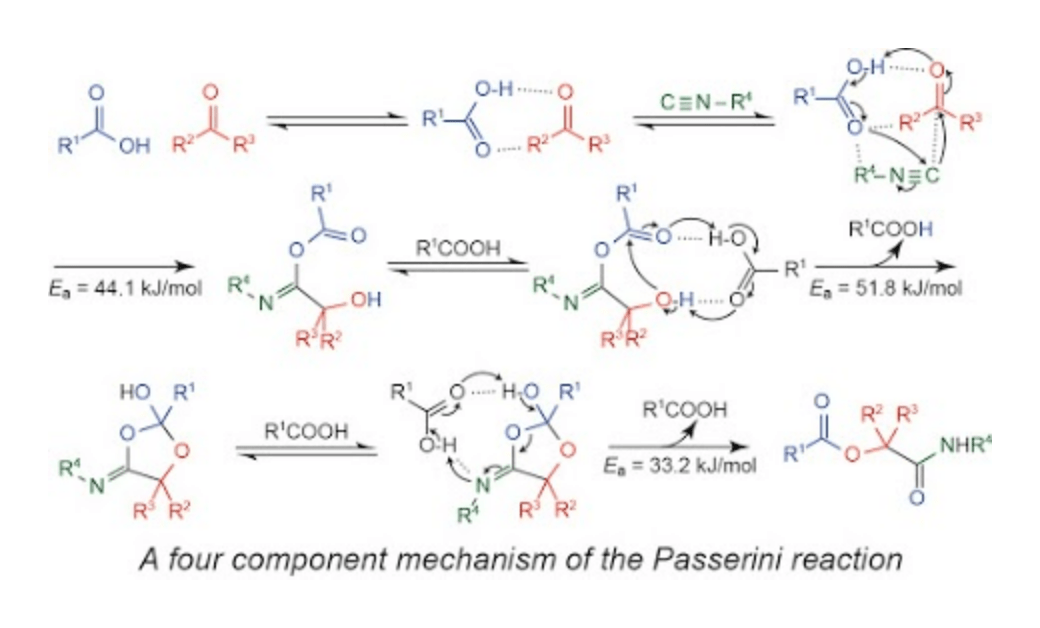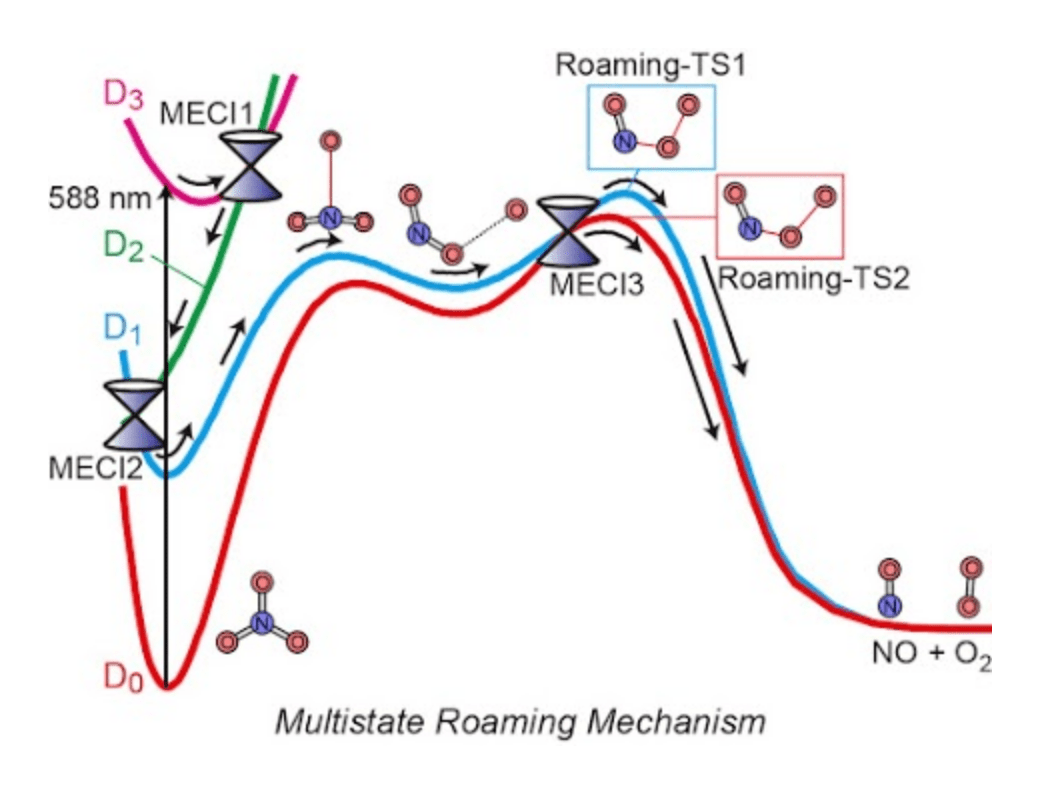Research
- Home
- Research
- Research 1
The concept of Global reaction route mapping - Research 2
GRRM program - Research 3
Artificial force induced reaction (AFIR) method - Research 4
Reaction path search in photoreactions
-
The concept of Global reaction route mapping
The mechanism of chemical reactions has been studied theoretically by exploring the potential energy surface (PES). On a PES, stable structures of molecules and reaction intermediates can be obtained as local minima (MINs). The transition states (TSs) of chemical reactions can be modeled by first-order saddle points. The intrinsic reaction coordinate (IRC), the mass-weighted steepest descent path starting from a TS, has been calculated as a path of chemical reactions. In photoreactions, the non-adiabatic transition occurs efficiently around regions in which two PESs are nearly degenerate. Especially, minimum energy seam of crossing (MESX) and minimum energy conical intersection (MECI) structures have been considered as critical points for nonadiabatic transitions. Therefore, development of widely applicable tools for systematically finding such critical points, MINs, TSs, MESXs, and MECIs, is of great significance. Geometry optimization techniques have been used in obtaining such critical points. However, geometry optimization requires good guesses concerning the reaction mechanism, such as a guess of TS structure, a guess of intermediate structure, a guess of a set of end points of the reaction, a guess of a set of reaction coordinates, etc. A geometry optimization starting from a bad guess may results in a wrong path. Moreover, unexpected paths as well as those far from guesses are not found. Thus, a fully-automated search is desired when a reaction mechanism is unknown (see [Int. J. Quant. Chem., 2015, 115, 258] for review).
-
GRRM program
We have worked on development of fully-automated reaction path searching methods under the title of global reaction route mapping (GRRM) strategy (see [Phys. Chem. Chem. Phys., 2013, 15, 3683] for review). Automated path searching approaches had been developed in combination with molecular mechanics force fields before we started the work in 2003. However, applications of such previous approaches to quantum chemical PESs had been limited. Especially, full searches on the entire PESs had been accomplished only in systems consisting of at most four atoms before 2003, because of heavy computational costs required to evaluate potential forces by quantum chemical calculations. To achieve path searching by quantum chemical calculations, it was necessary to develop a method that can save the number of force evaluations as much as possible. We developed the anharmonic downward distortion following (ADDF) method in 2004, and demonstrated automated searching for reaction paths in combination with quantum chemical calculations in systems consisting of 5~10 atoms (see [Bull. Chem. Soc. Jpn., 2014, 87, 1315] for review).

-
Artificial force induced reaction (AFIR) method
We further developed the artificial force induced reaction (AFIR) method, and enabled for applications of the automated path searching to organic reactions, organocatalysis, organometallic catalysis, and so on.

Our methods discovered many unexpected reaction pathways in complex multistep reactions (for example, see [J. Am. Chem. Soc., 2015, 137, 4090]).
-
Reaction path search in photoreactions
We have worked on development of fully-automated reaction path searching methods under the title of global reaction route mapping (GRRM) strategy (see [Phys. Chem. Chem. Phys., 2013, 15, 3683] for review). Automated path searching approaches had been developed in combination with molecular mechanics force fields before we started the work in 2003. However, applications of such previous approaches to quantum chemical PESs had been limited. Especially, full searches on the entire PESs had been accomplished only in systems consisting of at most four atoms before 2003, because of heavy computational costs required to evaluate potential forces by quantum chemical calculations. To achieve path searching by quantum chemical calculations, it was necessary to develop a method that can save the number of force evaluations as much as possible. We developed the anharmonic downward distortion following (ADDF) method in 2004, and demonstrated automated searching for reaction paths in combination with quantum chemical calculations in systems consisting of 5~10 atoms (see [Bull. Chem. Soc. Jpn., 2014, 87, 1315] for review).

We recently expanded the applicability by combining the strategy with AFIR and TDDFT, and has applied it to photochemistry of larger systems consisting of 20~50 atoms (for example, see [Phys. Chem. Chem. Phys., 2015, 17, 22561]).

We have been continuously working on development of the ADDF and AFIR methods. By using these two methods and combining these with existing approaches, we have proposed different strategies to tackle various chemical reactions, such as photoreactions, enzyme catalysis, cluster catalysis, etc. Further extensions toward applications to surface chemistry, solid state chemistry, biochemistry, etc. are currently in progress in our group.